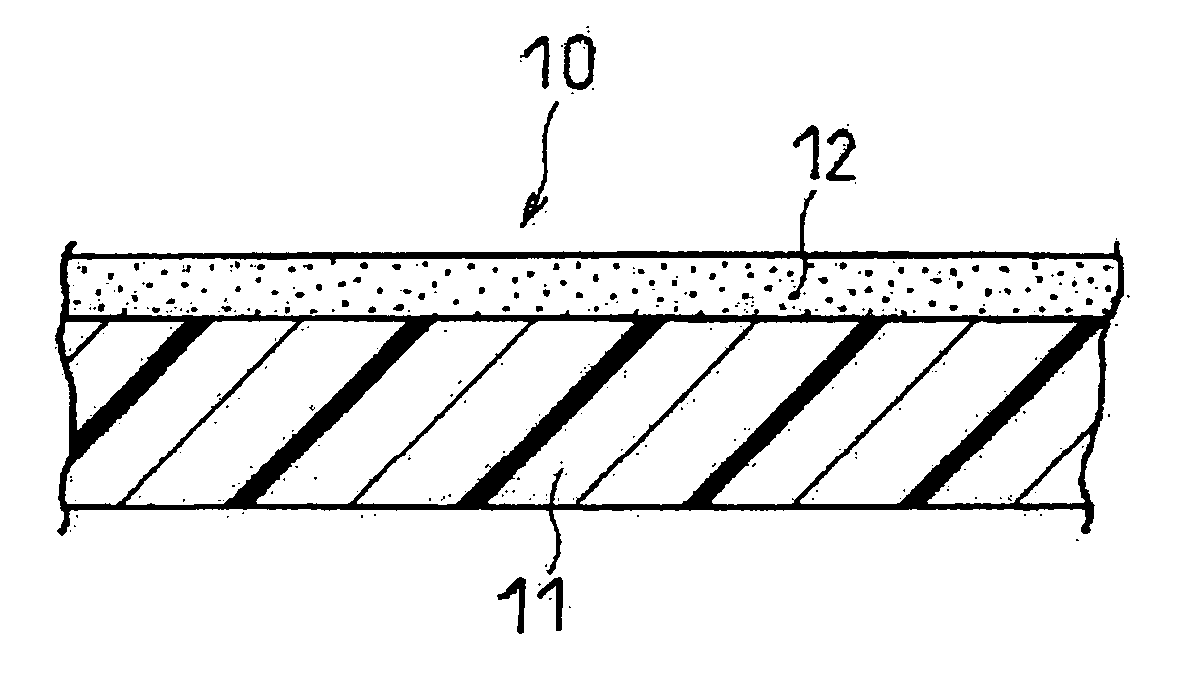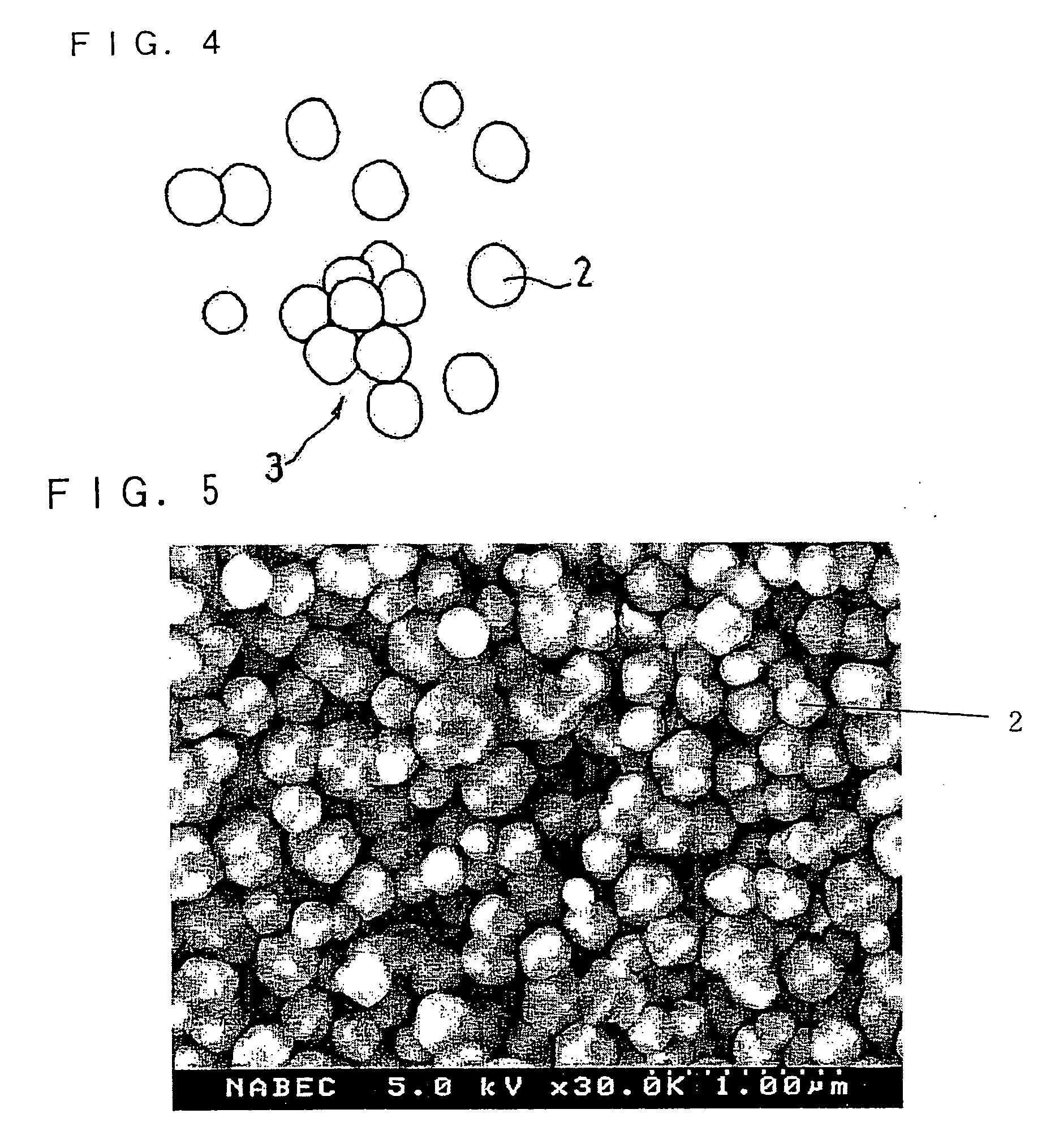Separator and Non-Aqueous Electrolyte Secondary Battery Using Same
a secondary battery and electrolyte technology, applied in the field of separators, can solve the problems of poor charge/discharge characteristics of batteries, impaired charge/discharge characteristics of high-rate batteries, and inability to charge/discharge in low-temperature environments, etc., to achieve high discharge capability, improve safety, and improve the effect of performan
- Summary
- Abstract
- Description
- Claims
- Application Information
AI Technical Summary
Benefits of technology
Problems solved by technology
Method used
Image
Examples
example
[0077] The following describes examples of the present invention, but it should be understood that the examples given below are merely illustrative and the scope of the present invention is not limited thereto.
[0078] A raw material powder of alumina (primary particles) having an average particle size of 0.1 μm was sintered at 1100° C. for 20 minutes, which was then sized using a wet type ball mill having 15 mm diameter alumina balls therein. Thereby, a joined-particle filler having an average particle size of 0.5 μm was obtained. This filler in an amount of 100 parts by weight was mixed with 4 parts by weight of a polyacrylic acid derivative (MB-720H available from Zeon Corporation, Japan) as a binder and N-methyl-2-pyrrolidone (NMP) as a solvent, which was then adjusted to have a nonvolatile content of 60 wt % using a stirrer. The resultant was dispersed in a bead mill having an internal volume of 0.6 L, 80% of which was filled with 0.2 mm diameter zirconia beads. Thereby, a paste...
examples 1 to 7
[0113] A lithium ion secondary battery was prepared in the same manner as described above using the paste A1 as a paste for forming the fine particulate filler-containing layer. This battery was referred to as a test battery of Example 1.
[0114] Likewise, lithium ion secondary batteries were produced in the same manner as in Example 1 except that the pastes A2, A3, A4, A5, A6 and A7 were used as pastes for forming the fine particular filler layer. These batteries were referred to as batteries of Examples 2, 3, 4, 5, 6 and 7, respectively.
example 8
[0122] A paste for forming the fine particulate filler-containing layer was prepared in the same manner as the paste A1 was prepared except that the amount of the binder (i.e., polyacrylic acid derivative (MB-720H available from Zeon Corporation, Japan)) was changed to 1 part by weight per 100 parts by weight of the joined-particle filler. Then, a lithium ion secondary battery was produced in the same manner as in Example 1 except that the paste prepared above was used.
PUM
 Login to View More
Login to View More Abstract
Description
Claims
Application Information
 Login to View More
Login to View More - R&D
- Intellectual Property
- Life Sciences
- Materials
- Tech Scout
- Unparalleled Data Quality
- Higher Quality Content
- 60% Fewer Hallucinations
Browse by: Latest US Patents, China's latest patents, Technical Efficacy Thesaurus, Application Domain, Technology Topic, Popular Technical Reports.
© 2025 PatSnap. All rights reserved.Legal|Privacy policy|Modern Slavery Act Transparency Statement|Sitemap|About US| Contact US: help@patsnap.com



